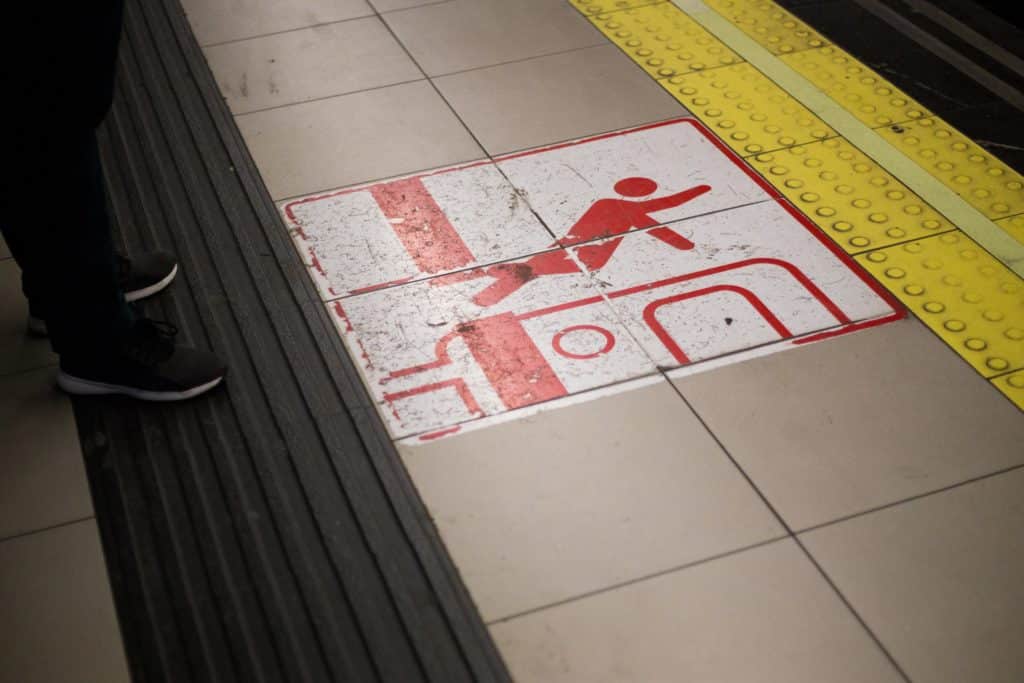Monitoring people is a tricky task, as comprehensive instructions are required at any given time.
Queue management and crowd control are essential for the supervision of large groups of people in various settings, such as massive events, public transportation, and emergency response situations. These methods are aimed at ensuring the safety, efficiency, and satisfaction of customers or attendees.
In addition, queue management involves organizing people in lines to provide a fair and orderly process for accessing goods or services.
This can be accomplished by using physical barriers like queue markers or designated crowd controllers. Nevertheless, such barriers can be seen as old-fashioned and outdated. A more effective approach would be the usage of audio signage like directional speakers.
Directional speakers serve as a more effective and modern alternative to traditional physical barriers for queue management. They can be strategically placed to guide people towards designated queuing areas, eliminating the need for physical obstructions.
Regarding public safety, directional speakers can also aid in emergency communication. By channelling sound to specific areas, these speakers facilitate the transmission of vital instructions and warnings to those in need, mitigating the potential for confusion. This ensures that safety messages are delivered efficiently to the targeted audience, contributing to operative crowd control and queue management during emergencies.
As well as transmitting warnings, ultrasonic speakers can be used to disclose localized information regarding ticketing, passport control, or even weather forecasts.
This approach is not only more visually appealing but also more space-efficient, as it allows for better utilization of different zones. In addition, these audio devices can be programmed to provide real-time updates on wait times and service availability, keeping customers informed and reducing frustration.
Cultural and educational institutions
There can be many different public sector applications. For example, parametric speakers can be used in educational institutions like libraries.
To reduce waiting lines and streamline the work of the librarians, the speakers could inform the readers about the upcoming procedure—the differences between borrowing and returning a book, or ask them to prepare a library pass in advance.
When it comes to different ticketing methods, directional audio systems could be used in small venues, holding concerts or performances. The attendees would receive the information in advance—to show/prepare their printed tickets, digital passes, or QR codes.
Also, the visitors could be instructed to prove their ID or their eligibility for a discounted ticket, e.g., by showing a student card or a membership pass.
Healthcare facilities
Another valuable application is healthcare institutions and facilities. Medical centers could employ directional sound for different departments that would help to effectively manage patient queues. Thus, the wait for appointments or procedures can become simplified and provide a sense of relief for both the visitors and the medical personnel.
For example, directional speakers could inform the patients waiting in line for a General Practitioner‘s appointment about the doctors and their designated offices, what documents to prepare in advance, or even where to pay for the services provided.
Airport terminals
Controlling queues in crowded public areas like airports can be difficult. As a possible solution, directional speakers can keep lines moving quickly and smoothly by giving travellers and passengers precise, brief directions1.
One of the most significant benefits of directional speakers is their ability to provide multilingual instructions. This is particularly important in border control areas, where passengers may speak a variety of languages. Directional speakers can be programmed to provide instructions in multiple languages, ensuring that everyone is able to understand what they need to do.
As many different operations are happening at the airport, for example, a directional speaker could announce the purpose of each window or post, “Passengers for passport control, please, proceed to Window 4. Passengers for visa processing, please, proceed to Window 5. All passengers must have their valid passport and visa ready.” This clear and detailed message could be delivered in several different languages, as it would be understood by numerous groups of people, which would help reorganize the queues effectively.
Airports are boiling hubs of activity, often welcoming newcomers to a new country. For migrants, navigating unfamiliar surroundings and adhering to immigration procedures can be difficult. Directional speakers can guide such people through the arrival process, directing them to the appropriate immigration counters and customs checkpoints.
By announcing the location of these areas, migrants can avoid confusion and delays, ensuring a smooth and efficient transition.
Security checkpoints
Clear and understandable instructions conveyed through directional speakers can significantly enhance the security screening process. By asking passengers to remove liquids and electronics, take off outerwear clothing, and proceed through the metal detector, directional speakers ensure adherence to security protocols and reduce the risk of prohibited items entering restricted areas.
Directional speakers can also greatly impact queue management during peak travel periods. By strategically placing the speakers announcing the number of passengers remaining at each security checkpoint, passengers can adjust their pace accordingly, preventing congestion and ensuring a steady flow of individuals through the screening process. The speakers can also inform about the possible waiting time at the security zone and any important flight changes or updates.
In addition, directional speakers can divert passengers to specific queues based on their needs, minimizing the likelihood of unnecessary baggage inspections. For example, the speaker could announce that passengers who are only taking hand luggage should proceed to the queue on the left, while passengers, who are carrying checked baggage are directed to the queue on the right.
Public transport

One of the most common warning signs of underground public transport is “mind the gap”, which informs the passengers about the space between the platform and the train.
Speakers like those produced by Focusonics can be employed to send cautionary announcements to individuals who venture beyond the safety line on train platforms. This can help improve the safety measures in place for commuters and reduce the risk of accidents.
Recreational areas
Lifeguards can utilize directional speakers to address specific individuals or groups at the beach who are farther away. The narrow beam of sound can travel long distances, reach the targeted people, and help them mitigate upcoming dangers. If you’re interested to learn more about the sound control technologies we use then click here.
This allows for clear and concise instructions to be given to swimmers, surfers, or anyone requiring lifeguard assistance.
By addressing specific areas, lifeguards can effectively communicate safety procedures, warn of potential hazards, and provide assistance in emergencies. They can provide instructions on swimming safety, remind of currents, or ask the swimmers to get back to the shore.
In addition, parks and recreation departments can also harness the power of directional sound to provide safety guidelines for boating, swimming, and fishing.
By directing the speakers towards endangered individuals and giving personalized warnings, they can help prevent accidents and ensure the safety of the people engaged in these activities.
Depending on the size of the beach or recreational zone, multiple directional speakers can be interconnected to extend the range of communication. This allows for seamless coverage of larger areas, ensuring that lifeguards, rangers or any controllers of the natural environment can effectively communicate with individuals or groups regardless of their location.
In summary, directional noise systems are a useful way to improve how we handle crowds and queues in different places. They can give clear, multilingual instructions, making things safer and more efficient.
Whether it is managing crowds at events, guiding people in transportation hubs, or sharing safety information in recreational areas, they play an important role in making things go smoothly for everyone.
- [1] Kuutti, J., Leiwo, J., & Sepponen, R. (2014). Local Control of Audio Environment: A Review of Methods and applications. Technologies (Basel), 2(1), 31–53. https://doi.org/10.3390/technologies2010031 ↩︎





